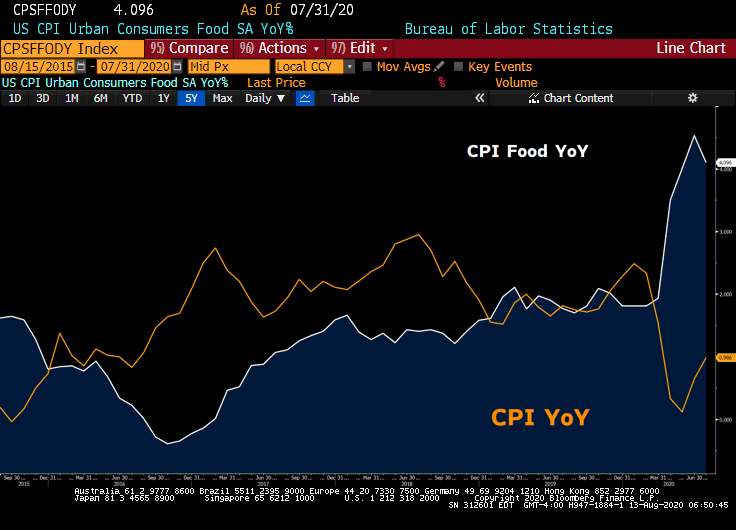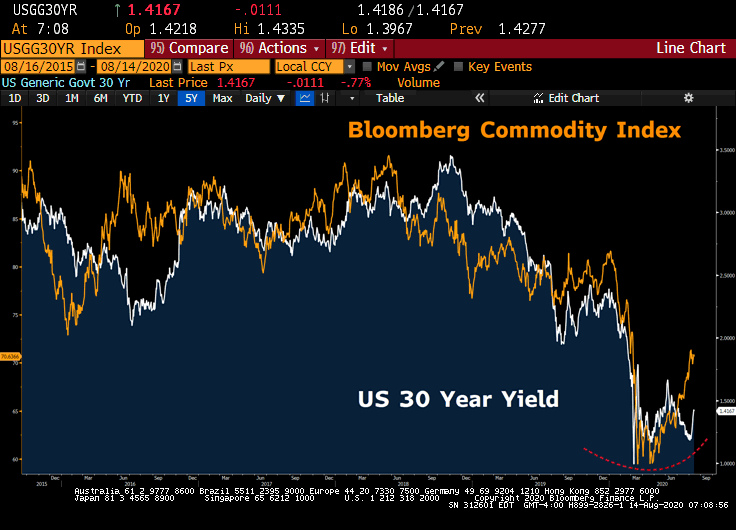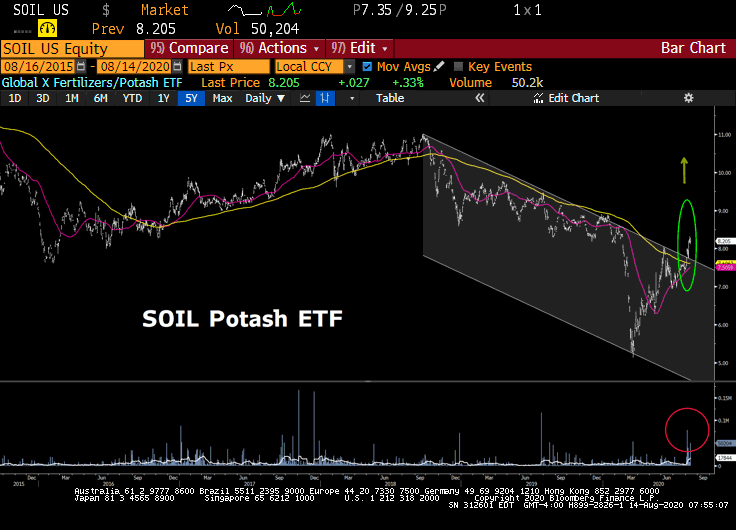“As the Fed expanded its balance sheet to unprecedented levels from December 2008 to December 2011, precious metals and precious metal miners widely outperformed equity markets. Historically, in the most extreme precious metal bull markets, silver widely outperforms gold. Today, silver trades at multi-decade cheap levels relative to gold. We remain bullish on both, but as we alerted clients last week, silver remains our highest conviction buy over the next 12 – 18 months. We’re long a full 3/3 position in the portfolio.”
Bear Traps Report, April 3, 2020
*Our institutional client flatform includes; financial advisors, family offices, RIAs, CTAs, hedge funds, mutual funds, and pension funds.
Email tatiana@thebeartrapsreport.com to get on our live Bloomberg chat over the terminal, institutional investors only please, it’s a real value add.
Don’t miss our next trade idea. Get on the Bear Traps Report Today, click hereCross Asset Signals are Surging
After almost a decade in hibernation, gold bugs are roaming the earth again. A fast drop in the dollar’s real yield and the uptick of a favored gauge of inflation expectations have sent the metal on a wild ride.
CPI vs. CPI Food
 When CPI food makes a 2-3 standard deviation move, it´is hard to ignore. For weeks there was meaningful divergence. Commodities were screaming higher while bond yields were looking the other way, no cares. That all changed this week.
When CPI food makes a 2-3 standard deviation move, it´is hard to ignore. For weeks there was meaningful divergence. Commodities were screaming higher while bond yields were looking the other way, no cares. That all changed this week.
Q2 Agriculture Equities
Mosaic MOS +49%
Bunge BG +22%
Nutrien NTR +15%
Food Stagflation
This week Bloomberg Opinion noted, skeptics might say there isn’t enough evidence of rising prices to warrant a neck-breaking run in gold, traditionally seen as a hedge against inflation. (Maybe all that lockdown isolation had bond traders imagining things.) In July, U.S. consumer prices rose 1% from a year earlier, well below the Federal Reserve’s 2% target. Meanwhile, at 2.7%, the headline figure in China remained in check, even as pork and fresh vegetable prices soared. But here’s a thought: What if our governments aren’t measuring consumer prices correctly? Is it possible that inflation is actually a lot higher?
Covid-19 has overhauled our spending patterns entirely, not least because of social distancing rules. We’re laying out less on transportation, restaurants and hotels, and splurging on food, because — like it or not — we’re all home chefs now. This sudden change can introduce significant biases in the consumer price index, according to a new study from Harvard Business School. Statistics bureaus in most countries update their CPI expenditure baskets only once a year, often using lagged data. The U.S. Bureau of Labor Statistics, for instance, revised its weightings last December using information collected a year earlier. As a result, the indexes don’t reflect Covid-19.
Soft Commodities and Bond Prices
 What is interesting is – in Q2 2020, hard commodities led this move higher, and “softs” (agriculture plays) really started to play catch up in recent weeks – THAT woke up the bond market this week.
What is interesting is – in Q2 2020, hard commodities led this move higher, and “softs” (agriculture plays) really started to play catch up in recent weeks – THAT woke up the bond market this week.
Pass-Through Inflation Risk
In the official gauge, for instance, groceries receive a weight of less than 8%, whereas transportation gets about 15%. But recent data collected from consumers’ credit and debit card transactions show that a more appropriate weighting would be around 11% and 6%, the study’s author, Alberto Cavallo, found.
As gnarled distribution makes food more expensive, and groceries take up a bigger share of our daily budgets, the inflation we’re feeling is quite a bit higher than the numbers suggest. Meanwhile, cheaper transportation hardly matters, because we’re all staying home.
China Floods are a Problem – Listen to SOIL
 There are reports of up to 30% of China´s agricultural output could be at risk. China facing food shortage after months of flooding, infestations. Xi’s description of food waste as ‘shocking and distressing’ could portend looming food shortage. Per Asian news outlets, this is the second time that Xi has given instructions on China’s grains within a month, raising eyebrows among China watchers as a sign of a possible food crisis.
There are reports of up to 30% of China´s agricultural output could be at risk. China facing food shortage after months of flooding, infestations. Xi’s description of food waste as ‘shocking and distressing’ could portend looming food shortage. Per Asian news outlets, this is the second time that Xi has given instructions on China’s grains within a month, raising eyebrows among China watchers as a sign of a possible food crisis.
State Secrets
The bias in China is harder to measure because the CPI weighting is a state secret. What we do know is that the National Bureau of Statistics tweaks it every year. Bloomberg Intelligence gives us their best estimates: Food may be getting a 20% weight, while transportation and communication has about 14.5%. Nonetheless, China’s downward bias is likely even more pronounced. Say food returns to its 30% weight from five years ago, a back-of-the-envelope calculation shows that consumer inflation would have hit 4% in July, well above the central bank’s 3% comfort zone. Food prices jumped by 13.2% last month, versus a 4.6% rise in the U.S., because a severe flood disrupted the supply chain.
This perhaps explains why, even though the dollar has become a less attractive investment vehicle thanks to the U.S. government’s chaotic virus-containment policies, investors aren’t crowding into high-yield emerging-market currencies but opting for gold instead. Nominal rates are falling everywhere, while inflation is ticking up, and who knows what the real interest rates in various nations are. Gold, as we’ve argued, serves as a useful hedge in these extraordinary times. Working with Bloomberg Opinion and Shuli Ren.
*Our institutional client flatform includes; financial advisors, family offices, RIAs, CTAs, hedge funds, mutual funds, and pension funds.
Email tatiana@thebeartrapsreport.com to get on our live Bloomberg chat over the terminal, institutional investors only please, it’s a real value add.
Don’t miss our next trade idea. Get on the Bear Traps Report Today, click here

